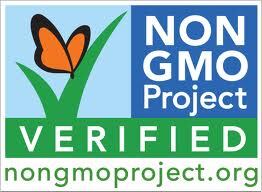“Non-GMO Project Verified” has become the fastest growing label in the natural products industry, representing $6 billion in annual sales and more than 16,000 verified products. But some groups, like the Organic Trade Association, worry that the growing number of non-GMO claims has led many consumers to forget the very meaning of organic.
“All of a sudden, you are walking down the aisle in the grocery story and you see two very prominent label claims on the front panel: the certified organic USDA seal and now the Non-GMO Project seal or another non-GMO claim,” Gwendolyn Wyard, regulatory director for organic standards & food safety at the OTA, told FoodNavigator-USA. “We became concerned that organic was beginning to lose part of its meaning. What we want to make sure is that consumers don’t think that non-GMO means organic, because non-GMO doesn’t mean organic. It’s one of many, many benefits you get when you purchase an organic product.”
(Indeed, the impetus for this very article was this journalist’s own misreporting that a product must be grown according to organic methods to be considered non-GMO; when in fact to be certified organic, a product can’t be genetically modified.)
You can say something that’s accurate but still not give a complete picture of the meaning
Such confusion coupled with the increased consumer demand for non-GMO labels prompted the OTA to take an official stance on organics and non-GMOs earlier this month, proclaiming that third-party certification under the USDA National Organic Program (NOP) is sufficient for non-GMO label claims.
“Organic regulation is not that complicated, but there are a lot of pieces and parts to it. In trying to explain what organic means, everybody tries to come up with clear messaging, but the danger there is it can become too simplified. You can say something that’s accurate, but it doesn’t give a complete picture. As a trade association, we have to consistently be educating everyone out there on what organic means,” Wyard said.
NOP-certified organic farmers must not use genetically modified seed, and they must have procedures in place that prevent GMO drift from adjacent farms. NOP-certified organic processors must have practices in place to separate organic seed, feed, crops, ingredients and finished products from non-organic (potentially GMO) forms during post-harvest activities, processing, storage and shipping. A third-party USDA-accredited certifying agent inspects a certified operation at least once a year. On the other hand, the Non-GMO Project is also third-party verified, though it doesn’t require USDA oversight.

The FDA’s initial draft guidance on voluntary GMO or non-GMO product labeling was released in 2001 (before NOP certification was implemented), and it took 13 years for the agency to issue its final guidance and reopen the comment period. The FDA’s main concern as it mulls the comments is related the difference between non-GMO and organic certification, which have become synonymous to many.
“That’s why the OTA opted to take a very strong position and say we do prefer organic certification to be the primary messaging on organic products,” Wyard said, adding that the association doesn’t have a problem with voluntary non-GMO claims, and recognizes that some companies may want them for competitive purposes or consumer needs.
GMO-free is potentially inaccurate
The other part of OTA’s stance, which Wyard admits can be hard for people to get their minds around, is for organic certified operators to use the term “non-GMO” or “contains non-GMO ingredients” as opposed to GMO-free, which could be potentially inaccurate. Unlike the term “GMO-free,” the term “non-GMO” does not necessarily claim that the product is 100% free of GMOs. When used on an organic product, it means it's been produced without the technology and without GMO ingredients and inputs, and this is inspected and enforced by the USDA, as Wyard noted.
“It requires coming to terms with the world we live in,” she noted. “Because of drift and the amount of GMO corn and soybean that’s out there, you could potentially have trace GMO due to drift. Unless you have a product that is fully tested –and even testing can be subject to limitations—so to say GMO free, initially you need a certificate to show it’s 100% free of GMO. Because we don’t live in an absolute world, saying things are ‘free of’ something can be inaccurate.”
So what should be the ideal role of the non-GMO in the marketplace? On non-organic product labels, Wyard says.
“Non-GMO is really intended to be something used on non-organic products because there’s such high consumer demand for that,” she said. “It’s also a stepping stone for companies to move toward organic that want to start by addressing consumer demand. They can start with the non-GMO label; that’s a really beneficial thing. At the end of the day, organic products are non-GMO and a lot more.”
